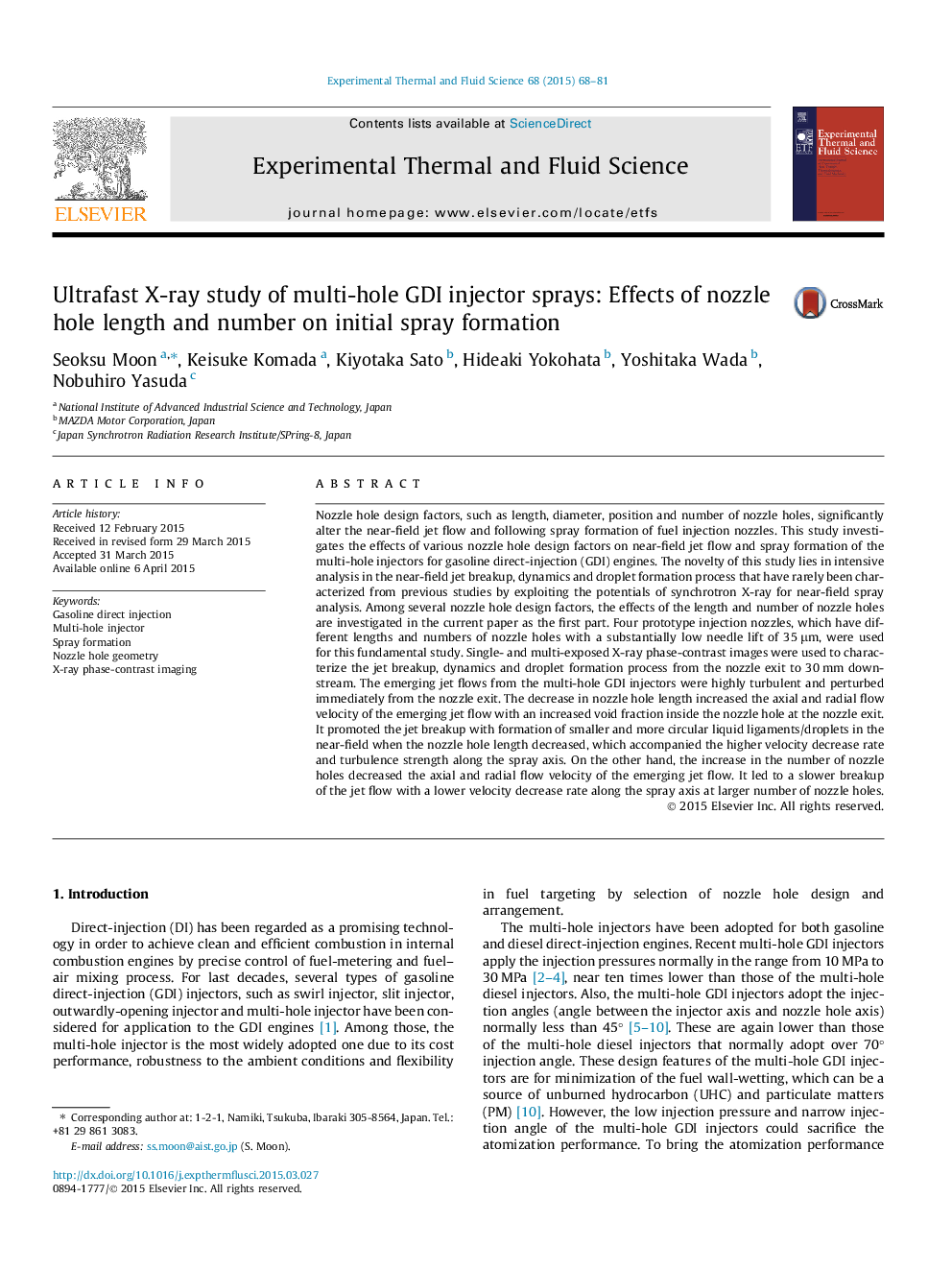| Article ID | Journal | Published Year | Pages | File Type |
|---|---|---|---|---|
| 7052142 | Experimental Thermal and Fluid Science | 2015 | 14 Pages |
Abstract
Nozzle hole design factors, such as length, diameter, position and number of nozzle holes, significantly alter the near-field jet flow and following spray formation of fuel injection nozzles. This study investigates the effects of various nozzle hole design factors on near-field jet flow and spray formation of the multi-hole injectors for gasoline direct-injection (GDI) engines. The novelty of this study lies in intensive analysis in the near-field jet breakup, dynamics and droplet formation process that have rarely been characterized from previous studies by exploiting the potentials of synchrotron X-ray for near-field spray analysis. Among several nozzle hole design factors, the effects of the length and number of nozzle holes are investigated in the current paper as the first part. Four prototype injection nozzles, which have different lengths and numbers of nozzle holes with a substantially low needle lift of 35 μm, were used for this fundamental study. Single- and multi-exposed X-ray phase-contrast images were used to characterize the jet breakup, dynamics and droplet formation process from the nozzle exit to 30 mm downstream. The emerging jet flows from the multi-hole GDI injectors were highly turbulent and perturbed immediately from the nozzle exit. The decrease in nozzle hole length increased the axial and radial flow velocity of the emerging jet flow with an increased void fraction inside the nozzle hole at the nozzle exit. It promoted the jet breakup with formation of smaller and more circular liquid ligaments/droplets in the near-field when the nozzle hole length decreased, which accompanied the higher velocity decrease rate and turbulence strength along the spray axis. On the other hand, the increase in the number of nozzle holes decreased the axial and radial flow velocity of the emerging jet flow. It led to a slower breakup of the jet flow with a lower velocity decrease rate along the spray axis at larger number of nozzle holes.
Related Topics
Physical Sciences and Engineering
Chemical Engineering
Fluid Flow and Transfer Processes
Authors
Seoksu Moon, Keisuke Komada, Kiyotaka Sato, Hideaki Yokohata, Yoshitaka Wada, Nobuhiro Yasuda,
